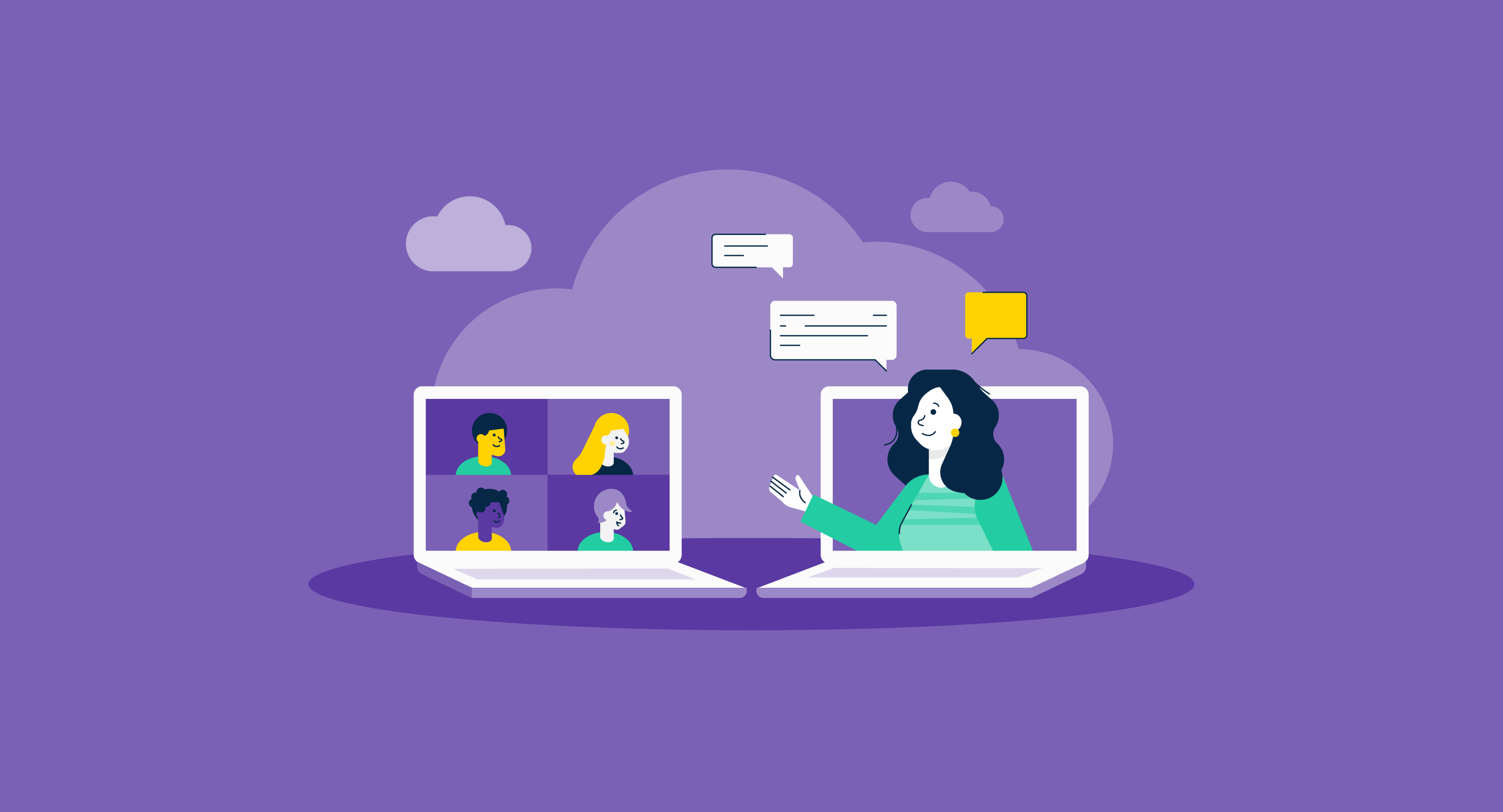What is online learning?
Online learning is the process of gaining knowledge and skills on the internet. It encompasses methods like pre-recorded lectures, live video classes, and collaborative, interactive assignments.
While online learning has existed for many years, it’s become increasingly popular since the COVID-19 pandemic for its flexibility. Students from preschool to college and beyond use online classes to complete state schooling requirements, acquire new professional skills, or learn for the sake of learning.
Online learning platforms allow schools, training programs, and course creators to produce and publish online courses and other digital educational materials. These platforms also let educators monitor student progress toward completion and performance.
Types of online learning
In the past few years, many types of programs and offerings have emerged to fit the needs of different learners. Some types of online learning are:
- Synchronous. In synchronous online learning, students interact with their instructors in real time. They attend live video calls and can typically ask questions, comment, or discuss content with other attendees. These courses are best for students who struggle with self-motivation, as teachers hold them responsible for attending and can modify instruction to engage them.
- Asynchronous. This type of learning is self-paced. It offers extra flexibility for students with packed schedules. Students can access course materials anytime and play or replay assigned videos as needed.
- Blended learning. This type combines online learning and traditional classroom instruction. One popular example of blended learning is the “flipped classroom.’” With this approach, students learn a concept at home through online video tutorials or posted course readings. Then they apply their learning through interactive tasks in synchronous digital sessions or in person.
- Massive open online courses (MOOCs). Anyone can access these online courses hosted by an online learning platform. Some are free, while others require a fee. These courses can be synchronous, asynchronous, or a blend.
Benefits of online learning
While the traditional “schoolhouse” or “classroom” learning model has worked for centuries, online learning has become increasingly popular in recent years for its advantages. Some of these benefits include:
- Flexibility. Online learning allows students to gain knowledge and skills at their own pace. Since so many classes exist, they can find ones that fit into their busy schedules. For example, a parent can fit in a synchronous class once their kids are in bed, or a teenager can explore an asynchronous course in small pieces between sessions.
- Customization. In a traditional classroom setting, students can only learn what the current staff members are qualified to teach. But with online learning, a student can access an almost endless variety of course options and configurations. For example, a student can take lessons in Japanese from a tutor in Japan while reinforcing that learning through a gamified language app.
- Affordability. Online courses exist at a wide variety of price points for almost any learner. Students can take thousands of free classes or pay for a premium or one-on-one course for hundreds or thousands of dollars. Even with paid courses, students can still save money over traditional options. An undergraduate student might choose online learning to avoid paying for transportation and room and board, for instance.
- Accessibility. With an internet connection, students can access course content from anywhere in the world. This is especially helpful for people who live in remote or rural locations. Plus, assistive technologies are prevalent in online learning. Hearing-impaired individuals can access closed captioning and screen readers, and vision-impaired learners can access tools like magnifiers and color contrast.
Online learning best practices
While online learning offers many advantages, students must engage with the material to get the most out of it and achieve their educational goals. It requires self-discipline and self-motivation. Some best practices to help students develop these traits include:
- Establishing a routine. Creating a designated time and place for studying builds new habits and keeps learners focused. Students can meet due dates without added stress.
- Asking questions. Sometimes it’s harder to build a rapport with course instructors in a digital environment, so students may hesitate to ask questions. Still, learners should reach out to instructors if they need clarification.
- Staying organized. In a traditional, in-person school setting, students often keep track of due dates, class times, and test dates with a paper planner or digital agenda. While some online learning platforms offer reminders and notifications, students who use multiple platforms at once may still need a centralized organizational app or calendar software.
- Taking breaks. Online learning has its perks, but the extended time in front of a screen causes strain and fatigue. Students should take short stretch breaks between classes and study sessions to stay alert and refreshed.
Ready to expand your knowledge? Browse the top-ranked online course providers.

Kelly Fiorini
Kelly Fiorini is a freelance writer for G2. After ten years as a teacher, Kelly now creates content for mostly B2B SaaS clients. In her free time, she’s usually reading, spilling coffee, walking her dogs, and trying to keep her plants alive. Kelly received her Bachelor of Arts in English from the University of Notre Dame and her Master of Arts in Teaching from the University of Louisville.



















